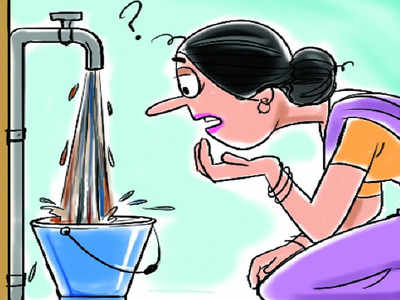Deccan Chronicle 28.12.2010
City faces water scarcity as dams overflow
December 28th, 2010
Dec. 27: This year we realised that blaming the rain gods for water scarcity
is unfair. It is human inefficiency that creates scarcity in many parts of the
city. For the first time in 10 years, all the reservoirs were filled to the
brim. The flood gates of the Osmansagar and Himayatsagar, two reservoirs that
had almost dried up, had to be lifted in order to release the excess water that
had built up.
But those citizens who may have felt that now their water woes were over were
in for a major disappointment. Many areas of the city continued to suffer from
water shortage with the supply being released just once in seven or 10 days.
It is a classic case of “scarcity in plenty”. To its shame, the Hyderabad
Metropolitan Water Supply and Sewerage Board (HMWS&SB) admitted that though
water was readily available, it could not be distributed equally to all areas of
the city because the distribution network — including supply lines, storage
reservoirs and water treatment plants — was inadequate.
The amount of water a citizen receives per day in the core city (litre per
capita per day or LPCD) is 130 LPCD. It is a meagre 80 LPCD per citizen in the
surrounding municipalities.
The Government of India norm meanwhile is at least 150 LPCD per person.
Greater Hyderabad, with a population of over 80 lakh, gets 340 million gallons
of water per day (MGD) though the demand is for nearly 500 MGD.
There are a total of 7.53 lakh connections in the city and the Board supplies
water daily to 3 lakh connections in the core city and parts of LB Nagar
andKukatpally. Another 2.50 lakh connections are supplied water on alternate
days, and the rest either once in three days, five days, or even seven days.
Mr M. Satyanarayana , the HMWS&SB director (Projects) admitted to this
correspondent that as of today, the supply to the municipalities is less than 40
per cent of the total demand for drinking water. The HMWS&SB requires Rs
3,190 crore to improve drinking water supply and is seeking a loan from the
Japan International Cooperation Agency (JICA). This project will cover the water
supply proposals of 12 municipal circles for construction of storage reservoirs
of 239 ML capacity, inlet and outlet mains of 197 km, distribution network of
3418 km, and construction of raw water treatment plants.
Even if the JICA releases the required funding, and even if work starts in
early 2011, the project will take at least four years to be completed.

